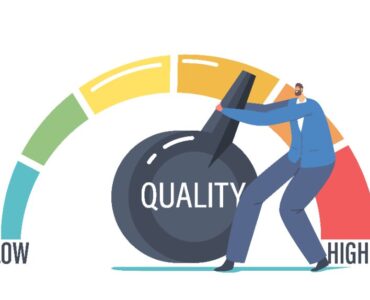Translators face many challenges in their daily work. They are forced to deliver projects within short deadlines and are often asked to translate more words per day than reasonably possible. And all of this must be done without compromising quality. It obviously means that stress and pressure are a staple of a freelance translator’s life. Here’s where CAT (Computer Assisted Translation) tools become critical for any translator. There is no perfect CAT tool, but they help professionals to a great extent.
There are several CAT Tools in the market: they have their differences regarding features, pricing and usability. At the end of this post we will list some of them. All CAT tools share a common aspect: translation memories (TM). Translation memories are like a database that store linguistic units that have previously been translated. They are key for easing the job of any translator. If you are not really sure about whether to use CAT tools or not, take into account the following statements and you may change your mind after reading this.
CAT tools improve quality
A good translator and a good translation agency always base their work on previous projects. Why? It is simple, because of similarities. Not all texts are equal, but some share some common points that can be applied to different projects. When translating segments you can get some translation suggestions, check the concordance level between your memory translation and the new segment, and even search previous translation results, which eases and helps a great deal. In those cases, CAT tools can reuse information by applying it to new translation projects. So you can keep accuracy which greatly improves quality.
CAT tools share information
You can use just your own information or even benefit from other’s translators previous work. Translation services UK is a company that has been applying the idea of shared memory translations, so that different freelance or in-house translators may take advantage of different projects. When having a big TM the results can be awesome. By choosing among several alternatives or relying on common options, any translator can deliver a better job.
We work with SDL Groupshare where we can maintain our TMs easily. Since this tool is from the developers of SDL Trados, which is the leading CAT tool in the market, most translators can connect to our TMs and work with the same TM easily. Projects can be made available with an online editor so that any translator can work on the text simultaneously. Alternatively, our PMs can also split text into numerous segments so that several translators can work on the same text at the same time, depending on the volume and timelines.
CAT tools reduce time
When you are reusing data, you can save time. And by applying previous information, you can translate quicker. It helps a lot for delivering all deadlines on time and / or enjoying some free time by finishing work earlier. So why are you wasting your time translating similar texts instead of reducing many hours of work? Thanks to CAT tools, you can save time. And time is money, right?
CAT tools make money
As mentioned, time is of the essence. So CAT tools pay for themselves and make money through increased translation throughput. If you can translate quicker, you can finish your work earlier or even afford more daily words without compromising quality. Meaning that you can complete more work in an allotted time. Or you can work less time, but obtain the same monetary income, which eventually means an increase in your hourly rate.
But you must also take into account that CAT tools are not perfect, so you should not completely rely on them, as technology is just an aid; but when doing your translation work you can benefit from some of their features for easing your job.
To sum up, if you are aiming for quality, if you want to reduce your working time, and if you are striving to increase your income as a translator, you should be using a CAT tool.
Common Ground in CAT Tools
Translation Memory eXchange (TMX) file format is used by most all of the CAT tools. This allows translation companies to switch between various CAT tools while not having to worry about file compatibility issues. This also means that translation companies freelance translators with any CAT tool and be able to integrate the TM into their aligned corpora.
Creation of a TM out of existing translations
Even if your company does not have an existing TM, you can easily create one by aligning the legacy source and translated text to create a TMX file. The TMX can then be imported into your CAT tool. There are a number of alignment tools that can be used for this task. Some of these include ABBYY Aligner, SDL Trados and MemoQ.
Which CAT Tool should you choose?
The leading CAT tool is SDL Trados. This company has been in existence for over 20 years and they have products for every kind of user, starting from freelance translators up to enterprise versions for large-scale LSPs and corporate clients. The basic license works on your PC (and not in a cloud). The entry level for freelance translators is quite high, around 500 Euro. This deters many freelance translators from purchasing it.
Another very popular CAT tools is Wordfast. The reason it is so popular: there is a free version that can be used quickly and easily (Wordfast Anywhere). The free solution is cloud-based. But is lacks many features that translators have come to rely on. But you can start with the free version and graduate to premium versions with time.
Across is a cloud-based solution which has become very popular in recent years. They offer a certification program for translators and LSPs.
MemoQ is one of the more cost competitive solutions in the market and can be integrated with Trados Studio (SDLXLIFF) files, which is one of its key benefits.
SmartCAT is a computer-assisted translation web app that enables collaborative translation.
Rocio Gonzalez is in charge of communication and is a linguist for Okodia, a language service provider. You can find her on LinkedIn here.





